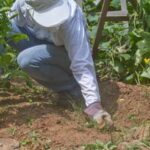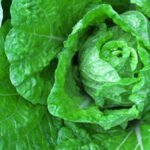Are you interested in trying your hand at vegetable gardening in the desert? While desert climates present unique challenges, with the right knowledge and techniques, it is possible to grow a thriving garden filled with delicious and nutritious vegetables. From selecting the right vegetables to understanding the importance of soil preparation and water-saving techniques, this article will guide you through everything you need to know to successfully grow a vegetable garden in a desert environment.
When it comes to vegetable gardening in the desert, one of the most important considerations is selecting the right vegetables that can thrive in hot and arid conditions. Understanding the unique challenges of desert gardening, such as extreme temperatures and limited water availability, is crucial for successfully cultivating a bountiful harvest.
In addition to choosing the right vegetables, finding the best location for your garden, proper soil preparation, implementing water-saving techniques, and protecting your plants from harsh weather and pests are all essential components for successful desert vegetable gardening.
In this article, we will explore each of these aspects in detail, providing tips and resources to help you get started on your desert vegetable gardening journey. Whether you are an experienced gardener looking to expand your knowledge or a beginner eager to try your hand at growing your own food, this article will provide valuable insights and practical advice for achieving success in desert vegetable gardening.
So roll up your sleeves and get ready to dig into the world of growing fresh produce in even the harshest of environments.
Selecting the Right Vegetables for Desert Climates
Choosing Heat-Tolerant Varieties
When it comes to vegetable gardening in the desert, it’s essential to select vegetables that can tolerate the extreme heat and dry conditions. Look for varieties that are specifically bred for hot climates such as tomatoes, peppers, eggplant, okra, and melons. These vegetables have adapted to thrive in high temperatures and require minimal water compared to other varieties.
Opting for Short Growing Seasons
Since the growing season in desert climates is often shorter due to the intense heat, it’s crucial to choose vegetables that have a shorter maturity period. Seek out vegetables with quick turnaround times such as radishes, green beans, summer squash, and leafy greens like spinach and lettuce. These types of vegetables can be harvested before the scorching summer temperatures arrive.
Considering Drought-Resistant Options
In order to conserve water and ensure a successful harvest in desert vegetable gardening, it’s wise to consider drought-resistant vegetable options. Vegetables like sweet potatoes, carrots, onions, and garlic have deep root systems that allow them to access moisture from deeper within the soil. Additionally, these vegetables require less frequent watering which makes them well-suited for desert conditions.
By carefully selecting the right vegetables for your desert garden based on their ability to withstand heat, short growing seasons, and drought conditions, you can increase your chances of a bountiful harvest while conserving precious water resources.
Understanding the Unique Challenges of Desert Gardening
When it comes to vegetable gardening in the desert, there are several unique challenges that gardeners must be prepared to face. From extreme temperatures to limited water availability, understanding and addressing these challenges is essential for a successful desert garden.
Extreme Temperatures
One of the most significant challenges of desert gardening is the extreme temperatures that can fluctuate dramatically throughout the day. These temperature fluctuations can stress plants and make it difficult for them to thrive. To combat this challenge, it’s important to select vegetables that are well-suited to hot and arid conditions. Additionally, providing some form of shade during the hottest part of the day can help protect your plants from excessive heat.
Water Scarcity
Another major challenge of vegetable gardening in the desert is water scarcity. With limited access to water, it’s crucial to implement water-saving techniques and efficient irrigation systems. This may include using drip irrigation, mulching to retain moisture, and choosing drought-resistant vegetable varieties. Additionally, capturing and storing rainwater can provide an additional source of hydration for your plants.
Poor Soil Quality
Desert soils are often low in organic matter and nutrients, making it challenging for plants to thrive. To address this challenge, gardeners can improve soil quality by incorporating compost and other organic amendments. Additionally, using raised beds or container gardening allows for greater control over soil quality and drainage. Understanding these unique challenges of desert gardening is essential for successfully growing vegetables in arid climates.
Choosing the Best Location for Your Desert Vegetable Garden
When it comes to vegetable gardening in the desert, selecting the right location is crucial for success. The ideal spot for your desert vegetable garden should receive plenty of sunlight throughout the day and have good drainage to prevent waterlogging, which can be detrimental to many vegetable plants. Look for an area in your yard that is not obstructed by tall buildings or trees to ensure that your plants receive adequate sunlight.
In addition to sunlight and drainage, it’s important to consider the proximity of your garden to a water source. Since water conservation is essential in desert climates, you’ll want to place your garden in an area where it will be convenient to establish efficient irrigation systems and watering practices. Access to a water source will also make it easier for you to stay on top of maintaining proper soil moisture levels for your vegetable plants.
Furthermore, when choosing a location for your desert vegetable garden, take into account any potential obstacles such as strong winds or sandstorms. These weather conditions can be damaging to delicate plants, so try to find a spot that is shielded from these elements as much as possible.
| Aspect | Consideration |
|---|---|
| Sunlight | Plenty of sunlight throughout the day |
| Drainage | Good drainage to prevent waterlogging |
| Proximity to water source | Convenient access for irrigation and watering |
| Protection from harsh weather | Avoiding strong winds and sandstorms |
Tips for Proper Soil Preparation and Maintenance
When it comes to vegetable gardening in the desert, proper soil preparation and maintenance are crucial for the success of your garden. Desert soil tends to be sandy and lacks organic matter, which can make it challenging for plants to thrive. However, with the right techniques, you can improve the quality of your soil and create an environment that is conducive to healthy plant growth.
Here are some tips for proper soil preparation and maintenance for your desert vegetable garden:
1. Amend the Soil: Incorporate organic matter such as compost, aged manure, or peat moss into the soil to improve its structure and fertility. This will help retain moisture and nutrients, which are essential for the health of your plants.
2. Mulch Your Garden: Applying a layer of mulch around your plants can help conserve moisture, reduce evaporation, and control weed growth. Organic mulches like straw, wood chips, or shredded leaves are ideal for desert gardening.
3. Use Raised Beds: Consider constructing raised beds filled with a combination of topsoil, compost, and other organic materials. This allows for better drainage and provides good aeration for plant roots.
By implementing these strategies for proper soil preparation and maintenance, you can create an optimal growing environment for your desert vegetable garden. With healthy soil, your plants will be better equipped to withstand the harsh conditions of the desert climate and produce a bountiful harvest.
Implementing Water-Saving Techniques and Irrigation Systems
When it comes to vegetable gardening in the desert, water is a precious resource that must be carefully managed. One of the most effective ways to conserve water in your desert garden is by implementing water-saving techniques and efficient irrigation systems.
Drip irrigation is an excellent option for desert vegetable gardening. This method delivers small amounts of water directly to the base of plants, minimizing evaporation and ensuring that the plants receive the moisture they need. Additionally, using mulch around your plants can help retain soil moisture and reduce the frequency of watering.
Another water-saving technique for desert vegetable gardening is utilizing graywater or recycled water from household use to irrigate your garden. By repurposing this water, you can significantly reduce your reliance on potable water for gardening purposes.
In addition to these techniques, it’s important to monitor the moisture levels in your soil regularly and adjust your irrigation schedule as needed. By being mindful of how and when you water your desert vegetable garden, you can not only conserve water but also promote healthier, more resilient plants that are better equipped to thrive in arid conditions.
| Water-Saving Techniques | Irrigation Systems |
|---|---|
| Drip irrigation | Efficient watering directly at plant base |
| Utilizing graywater | Recycling household water for irrigation |
| Mulching | Retaining soil moisture and reducing evaporation |
Protecting Your Desert Garden From Harsh Weather and Pests
In the harsh desert climate, vegetable gardening can be a challenging endeavor. Not only do gardeners have to contend with scorching temperatures and minimal rainfall, but they also need to protect their crops from extreme weather conditions and persistent pests. Here are some essential tips for safeguarding your desert garden from harsh weather and pesky invaders.
First and foremost, it’s crucial to provide adequate shade for your desert vegetable garden. The intense sunlight and high temperatures in desert climates can easily damage delicate plants. Consider using shade cloth or constructing shade structures to shield your crops from the blazing sun. Additionally, planting taller vegetables like corn or sunflowers on the west side of your garden will create natural shade for smaller plants.
Another key aspect of protecting your desert garden is implementing effective pest control measures. Insects and rodents can wreak havoc on vegetable crops, especially in a desert environment where resources are scarce. Consider using natural predators like ladybugs and praying mantises to keep pest populations in check. Additionally, regularly inspect your plants for signs of infestation and promptly address any issues with organic pesticides or traps.
Furthermore, strong winds are a common occurrence in many desert regions, posing a threat to fragile plants. To safeguard your garden from wind damage, consider installing windbreaks such as fences or hedges around the perimeter of your vegetable patch. These barriers will help reduce wind velocity and protect your crops from being battered by strong gusts.
In summary, protecting your desert vegetable garden from harsh weather and pests requires careful planning and proactive measures. Providing adequate shade, implementing effective pest control strategies, and erecting windbreaks are all essential steps in ensuring the success of your desert gardening endeavors.
- Provide adequate shade for delicate plants
- Implement natural pest control measures
- Install windbreaks to protect against strong winds
Harvesting and Enjoying the Fruits of Your Desert Vegetable Garden
After putting in all the hard work of planting, nurturing, and maintaining your desert vegetable garden, it is finally time to reap the rewards of your labor. Harvesting your vegetables is a fulfilling and satisfying experience that allows you to enjoy the fresh flavors and nutritious benefits of homegrown produce. However, harvesting in a desert climate comes with its own set of considerations.
Before venturing out into your garden to start picking your vegetables, it’s important to understand the best practices for harvesting in a desert environment. The extreme temperatures and intense sunlight can have an impact on the quality and ripening process of your vegetables. It’s crucial to harvest during the cooler parts of the day, such as early morning or late afternoon, to ensure that your produce stays fresh and crisp.
When harvesting vegetables in a desert climate, it’s important to be mindful of dehydration and wilting. Be sure to have a plan in place for immediate cooling and hydration of your freshly picked produce. This will help maintain their texture and flavor, ensuring that you get the most out of your harvest. Additionally, consider using shade cloths or umbrellas to protect yourself from the harsh sun while working in the garden.
As you gather your bounty from your desert vegetable garden, take some time to appreciate the fruits of your labor. Whether it’s vibrant red tomatoes, crunchy cucumbers, or sweet bell peppers, each vegetable represents the success of overcoming the unique challenges of vegetable gardening in the desert.
Enjoying these fresh flavors not only provides nourishment for you and your family but also serves as a reminder of what can be achieved with dedication and proper techniques in this challenging environment.
Resources and Further Reading for Successful Desert Vegetable Gardening
In conclusion, vegetable gardening in the desert comes with its own set of challenges and unique considerations. However, with the right knowledge and techniques, it is very much possible to have a successful and fruitful garden in the arid climate.
By selecting the right vegetables for desert climates, understanding the unique challenges of desert gardening, choosing the best location, properly preparing and maintaining the soil, implementing water-saving techniques, and protecting your garden from harsh weather and pests, you can create a thriving oasis of greenery in the desert.
One key aspect of successful desert vegetable gardening is proper soil preparation and maintenance. By amending the soil with organic matter and ensuring good drainage, you can create an environment where your plants can thrive despite the challenging conditions. Additionally, implementing water-saving techniques such as drip irrigation and mulching can help you conserve precious water resources while still providing enough hydration for your plants to grow.
For those interested in delving deeper into the world of desert vegetable gardening, there are plentiful resources and further reading materials available. From books to online forums and local gardening clubs, there are many avenues for learning more about best practices for vegetable gardening in the desert. With dedication, patience, and a willingness to adapt to the unique demands of desert gardening, you can reap bountiful harvests from your very own desert vegetable garden.
Frequently Asked Questions
What Vegetables Grow Well in the Desert?
Several vegetables can thrive in desert conditions, including tomatoes, peppers, zucchini, carrots, radishes, and lettuce. These plants require well-draining soil, proper watering techniques, and protection from intense sun and heat.
How Do You Make a Vegetable Garden in the Desert?
To create a successful vegetable garden in the desert, it’s important to first prepare the soil by adding organic matter such as compost to improve its water retention and nutrient content. Then, choose vegetables that are well-suited for desert climates and provide them with consistent watering and shade when necessary.
Can You Grow Vegetables in the High Desert?
Yes, it is possible to grow vegetables in the high desert with careful planning and maintenance. It’s important to select vegetable varieties that are adapted to arid conditions and take steps to protect them from strong winds, extreme temperatures, and low humidity levels. With proper care, a thriving vegetable garden can be established even in the high desert.

If you’re looking to get into vegetable gardening, or are just looking for some tips on how to make your current garden better, then you’ve come to the right place! My name is Ethel and I have been gardening for years. In this blog, I’m going to share with you some of my best tips on how to create a successful vegetable garden.





